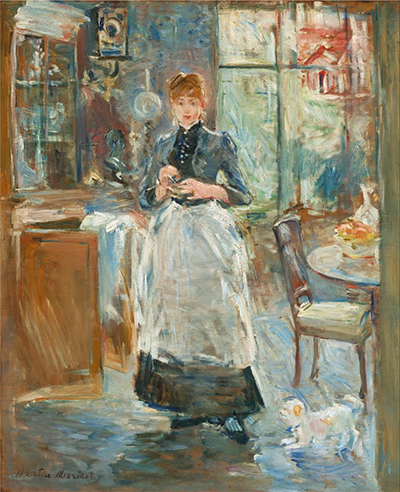In the Dining Room dates from 1886 and features two of artist Morisot's most famous attributes, her loose brushstrokes and also the theme of domestic female life.
It was only when women arrived in the impressionist movement that we started to see more examples of domestic life for women of this period. Scenes of motherhood for example could only be accurately captured by those who understood the female mind. The likes of Degas had captured women bathing or get dressed, but the connection of woman and child was best seen in some of Morisot's paintings like The Cradle, which features her sister and niece. Women were also seen as subordinant to men by society at this time and worse so earlier, meaning they would often only be found in domestic scenes. Art was a way of changing expectations about the role of women, with Morisot also including scenes of female friends out together enjoying leisure time.
The overall atmosphere of In the Dining Room is relatively positive. The woman captured here is joined by her playful pet dog who keeps her company as she completes her day's chores. Morisot depicts her as tall, strong and in control. She is dressed well despite being at work and the feel to this work gives a happier outlook on the lives of domestic women's lives during this period. Light floods in from the back of the scene to help create this atmosphere and her home looks relatively tidy and affluent. It is not the symbol of female desperation that other male artists might produce, but an uplifting scene which depicts a powerful, confident woman. The painting is a part of the Chester Dale Collection at the National Gallery of Art in the United States.
Berthe Morisot helped to bring a female touch to the impressionist movement which was predominantly filled with male artists. She brought in touching scenes of mother and child and also offered a unique view of the role of women within French society. She held a strong character herself and wanted to portray other women as strong and equal, even though at this time they were still not quite at that point. A more positive depiction of women was an important way of trying to change views, showing a different perspective on how society could be.




